When it comes to airport security, it’s not always clear what you can and can’t bring on a plane.
This is especially the case for food.
There’s nothing worse than being both confused and hangry, so in this article, I will cover the TSA food rules and discuss which food items you can bring on a plane.
I’ll give you a lot of tips on how to best transport your grub and how to be ready for TSA in the event you get questioned on some items.
Table of Contents
Can you bring food on a plane?
Yes, you can bring food on a plane but you could face some restrictions depending on whether or not TSA considers your food a “solid” or “non-solid.”
The distinction is not always as obvious as you think it is and some foods have special exceptions.
So keep reading below and I’ll break it all down and give you some clear examples of what is allowed and what might be tossed!
Tip: Use the free app WalletFlo to help you travel the world for free by finding the best travel credit cards and promotions!

Common solid foods allowed by TSA
TSA published a list that provides some guidance on what foods are allowed and what foods are not. Here is a non-exhaustive list list of common foods on that list (plus others) that are allowed through airport security.
- Bread
- Brisket
- Burgers
- Burritos
- Candy
- Cereal
- Chicken wings
- Solid cheese
- Solid chocolate
- Coffee beans or ground
- Cooked meats, seafood and vegetables
- Cookies
- Crackers
- Dried fruits
- Fresh eggs
- French fries
- Fried chicken
- Gum
- Hot dogs
- Nuts
- Solid pet food
- Pies and cakes
- Pretzels
- Pizza
- Salt
- Sandwiches
- Snacks
- Spices (dry)
- Steaks
- Tacos
- Tea (dry tea bags or loose tea leaves)
- Wraps
Because these are all solid food items, there is no limit on the amount of these that you can bring through TSA security.
You just need to make sure that the size of your carry-on and personal item doesn’t exceed what is allowed by the airline you’re flying with.
Keep in mind when you are bringing these items through security, you want to make sure that they are properly packaged but more on how to do that further below.

Non-solid food items: it’s not all gravy
Things start to get a little bit mushy when we start talking about non-solid food items, because the TSA liquids rule may apply to your food.
TSA Liquids 3-1-1 rule
The TSA Liquids 3-1-1 Rule states that you can only bring liquids in containers no larger than 3.4 ounces (100 milliliters) and that all of your liquid containers must fit “comfortably” into one clear, quart-size bag.
Comfortably means that the bag will seal without busting at the seams.
During screening, you will have to remove this bag from your luggage unless you have TSA Pre-Check, which is a great program that allows you to get through airport security much quicker.
Many non-solid food items will fall into this liquid category and thus be subject to the 3.4 ounce limitations.
Foods that fall under the liquids rule
Here is a non-exhaustive list of food items that will fall under the liquids rule:
- Liquid chocolate
- Creamy dips and spreads
- Mashed fruits such as applesauce
- Gravy
- Honey
- Jam and jelly
- Maple syrup
- Oils and vinegars
- Peanut butter
- Wet pet food
- Salad dressing
- Salsa and sauces
- Soups
- Stews
- Yogurt
Basically anything that is usually poured, pumped, scooped, smeared, squeezed, slurped, or mashed will be considered a liquid for TSA purposes.
So if you want to bring any of the above items you can, you just need to bring them in a 3.4 ounce container.
And remember, it’s the size of the container that needs to be 3.4 ounces — not the amount of food inside. So you can’t bring 3.4 ounces of honey in a 5 ounce jar, for example.

In-between foods (solids mixed with liquids)
Things get a little bit less clear when you are talking about solid foods that have liquid-like substances on or inside them.
For example, if you were trying to get through with a stack of pancakes drowning in maple syrup, would the pancakes be allowed but not the syrup?
Only a certain amount of syrup?
TSA agents have discretion at security checkpoints so you never really know how they might treat certain types of foods that are in between.
But TSA has provided us some guidance in the past to suggest that when it comes to food that mix solids and liquids, you can probably bring them through if they are predominantly solid.
Take a look at this tweet where they confirmed cupcakes would be allowed in unlimited quantities and sizes even though frosting is considered a liquid.

Interpretation: Foods that are predominantly solid may not be subject to the liquids rule.
This could include the following items:
- Cakes with icing
- Cinnamon rolls with icing
- Jelly filled donuts
- Bagels with spread
- Lasagna
- Pasta
- Pies
Expect there to be inconsistencies when bringing items that fall into this in between category and consider saving the tweet above or taking a screenshot so that you can show it to a TSA agent if needed.
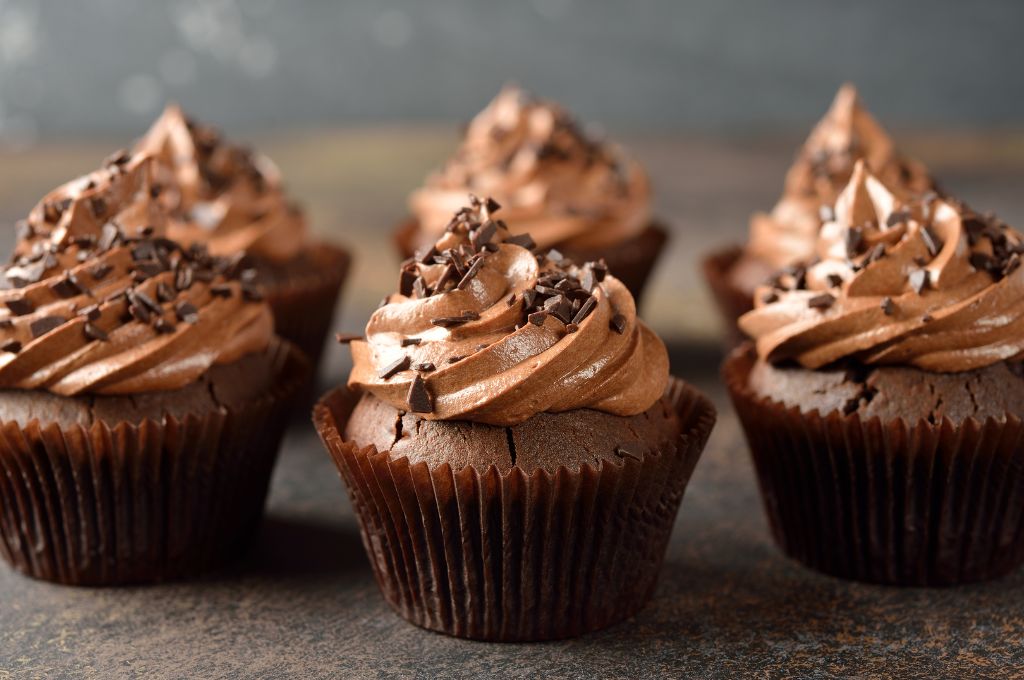
Special foods
Some foods may trigger additional screening or have certain restrictions you may want to think about before bringing them on the plane. These are what we call “special foods.”
Baby food
Baby food is allowed through airport security when brought in “reasonable quantities.” You will likely be forced to remove these items from the rest of your carry-on items.
The big question here is what is considered a “reasonable quantity.” Obviously, that opens the door for subjective interpretation. It seems that the TSA agents will consider the length and duration of your trip when determining the reasonableness. So, for example, if you are on a two hour trip they will consider how much food your baby would need for two hours.
This has led to some issues in the past.
One reason why is that some parents are extra cautious when flying with their kids and will factor in potential delays and things of that nature so that they are well-prepared. This has led some couples to bring more baby food and formula than TSA believes as necessary.
My advice would be to bring as much as you think is necessary for your baby, but be prepared to justify yourself to a TSA agent on why your amount of baby food or formula is a reasonable amount.
The worst that could happen is they require you to throw some of it out and you can always file a complaint later if you think that they were being unreasonable.
Baby formula
Baby formula is allowed through airport security when brought in reasonable quantities. You will likely be forced to remove these items from the rest of your carry-on items.
Breast milk
Breast milk is allowed through airport security when brought in reasonable quantities. You will likely be forced to remove these items from the rest of your carry-on items.
Fresh fruits and vegetables
Fresh fruits and vegetables will be allowed but you need to be very mindful of your destination.
Passengers flying from Hawaii, Puerto Rico, or the U.S. Virgin Islands to the U.S. mainland cannot take most fresh fruits and vegetables due to the risk of spreading invasive plant pests.
You can visit the U.S. Department of Agriculture website for more information.
You also need to be very mindful about traveling to international destinations with fruits and vegetables and other perishable items. You will need to declare these items most likely and some items will be prohibited.
Related: How to (Legally) Bring Pineapples From Hawaii to the Mainland
Cheese
Cheese can be a little bit tricky for a few reasons.
Solid cheeses like cheddar and swiss won’t be a problem but some of the soft cheeses like Brie cheese will be considered liquids.
Another problem with cheese is that cheese blocks can resemble explosives in the x-ray machine. So sometimes you might get pulled aside and your cheese (and maybe you too) will have to go through advanced screening.
Fresh meat and seafood
Fresh meat and seafood is allowed. However if you are bringing them frozen or with an ice pack then you need to make sure that the ice remains in a solid-state.
If the ice is partially melted, TSA will probably not allow you to bring the ice through. This means that you need to really time your trip to the airport so that these items are brought directly out of the freezer and you arrive at the airport shortly.
Frozen foods
The same rule as above applies to other frozen foods. If you are going to bring anything frozen through airport security that ice or ice pack must remain in a solid-state. If something turns into a slushy type of state, then that will likely be considered a liquid and be subject to the 3-1-1 rule.
Ice cream
Ice cream is allowed to security when it is brought through in its solid state.
Edibles
If you plan on bringing edibles containing THC make sure you are well-versed in the rules on bringing marijuana on a plane.
Live lobster
A live lobster — yes, a live lobster — is allowed through security and must be transported in a clear, plastic, spill proof container.
A TSA officer will visually inspect your lobster at the checkpoint and if they give you any pushback, just tell them it’s your “emotional support lobster.”
TSA recommends that you contact your airline to determine your airline’s policy on traveling with your lobster before arriving at the airport.
Protein or energy powders
Powder-like substances greater than 12 oz. / 350 mL must be placed in a separate bin for X-ray screening.
They may require additional screening and containers may need to be opened. TSA encourages you to place non-essential powders greater than 12 oz. in checked bags.
Read more about traveling with protein powder here.
Packing your food
Bringing food in your checked baggage
Bringing food in your checked baggage is allowed and may be the only way you can get certain foods on the plane.
Just make sure that you pack safely and with some common sense.
Ziploc bags can work great and consider double bagging to prevent leaks and spills.
Be really careful bringing foods that are in glass jars because your checked baggage can get banged around. We’ve written an entire guide on traveling with glass and it could definitely help you out on this.
The other consideration is that the cargo hold can subject your food items to more extreme conditions whether it be temperature or pressure.
A lot of planes do have temperature control and pressure control in the cargo hold so it’s not like an icy space tundra in there but your bags could be exposed to extreme heat during loading and unloading.
So if you have a delicate item, especially something that might melt, it’s probably better to put it in your carry-on.
Bringing food and liquids as a carry on through TSA security
When you bring your food through TSA security, you want it to be properly packaged and separated.
When I’m talking about packaging, I don’t mean the original packaging of your food items. That’s not needed (although it can sometimes be helpful).
I just mean that you want to place your food items inside something that makes sense such as travel tupperware, zip-loc bags, etc. You can even bring items like pizza wrapped in aluminum foil.
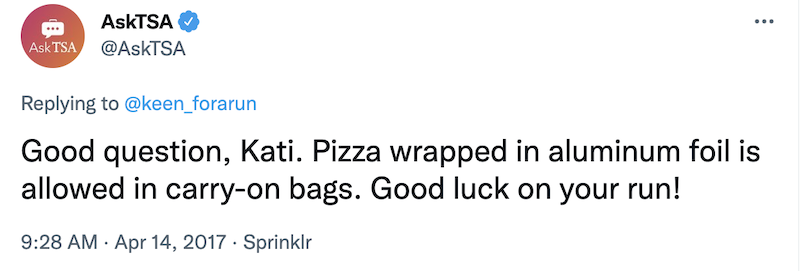
Next, you want to separate your food items from your luggage contents or at least be prepared to.
TSA recently announced that they were having issues with food items cluttering up their x-ray images. As a result, you may be asked to remove all of the food/snack items from your carry-on luggage.
This means that you should take an extra effort to properly package and store your food items so that they are easily retrievable from your luggage.
How can you do this?
Place food in a separate compartment in your bag or try to wrap it up in a bag or store it in a container that can be taken out quickly.
When passing food through the x-ray machine, set your food in its own bin or bowl. But be careful. Take extra effort to keep your food from being exposed since airport security trays carry more germs than toilets.
Also, don’t worry about the effects of the X-ray scanners because supposedly they don’t affect your food quality.
One last thing, be aware that if you bring certain items like salt or pepper (that can resemble explosives), it could cause you to get additional screening and slow you down a little bit.
Bringing food and liquids purchased post-security
We’ve all been there. Strolling through the airport, stopping to pick up a sandwich, when all of a sudden you hear your plane is boarding…. Your immediate reaction might be to panic and start stuffing your pie hole — but you don’t have to!
That’s because you can bring food and drinks onto the plane that you purchased after going through airport security so long as there is room for you to store them.
I always try to make sure that I have room inside my carry on bag for the food I am bringing on a plane just in case they consider it as an additional carry-on item/personal item.
Many airlines won’t consider a small amount or “reasonable amount” of food to be a carry on.
In fact, here is what Delta states:
The following items do NOT count as personal items (they’re freebies):
- A jacket and/or umbrella
- Food or drink purchased after clearing the security checkpoint
- Duty-free merchandise
- Special items like strollers, child restraint seats or assistive devices such as wheelchairs or crutches
So as you can see, food and drink purchased in the airport after security is not considered a personal item (or carry-on).
This means that you could board a plane with a carry-on bag, a personal item like a backpack, and a bag of food from the airport food court.
But don’t push it because if you look like you’re personally catering the flight, airlines might find that to be “unreasonable.”
When flying, it’s best to hold your food in your lap or store it in your personal item or carry-on. Placing an item like a to go box on the floor (under thee seat in front) may not be the most sanitary option — plus your food could slide around.
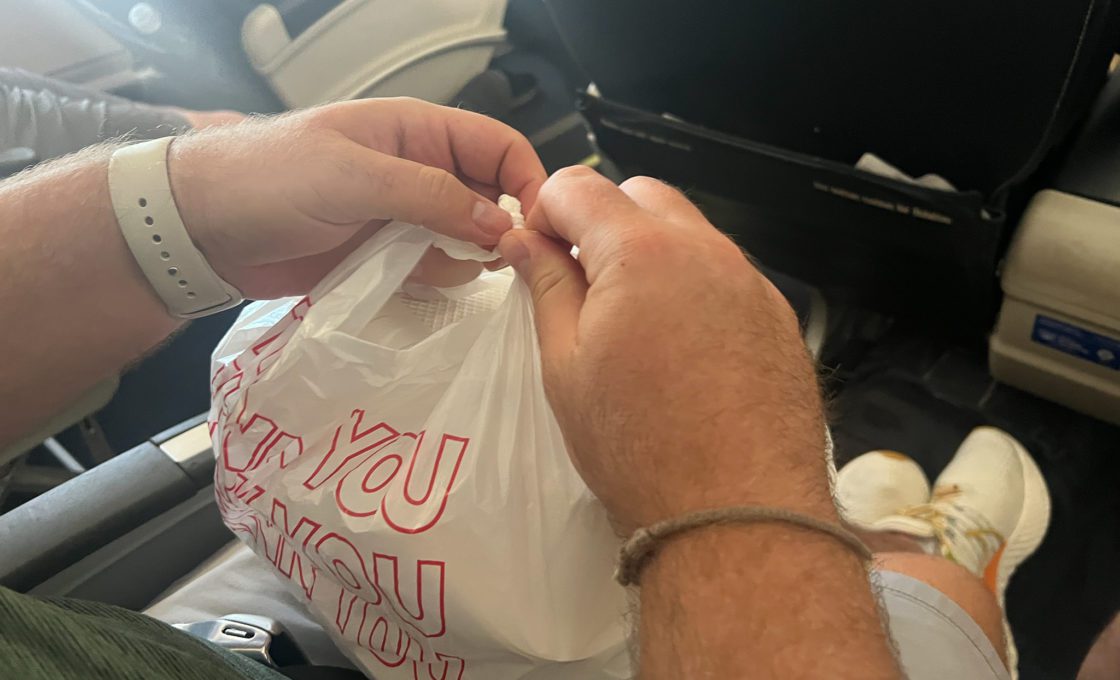
Bringing your own food or already opened food
The same solid and liquid rules talked about above apply to food that you make on your own and bring from home.
So if you make yourself a grilled cheese sandwich at home and want to bring that on the plane with you then don’t let anybody stop you.
Also, it doesn’t matter if you have already opened up the packaging on your food before heading through security. You could stuff an already opened bag of chips, unwrapped protein bar, etc. in your carry-on and be fine.
Eating food on a plane
There are no rules against bringing your own food on the plane and eating it during the flight.
The main consideration when doing this is how it might affect other passengers.
There are some foods like tuna, cooked broccoli, and hard-boiled eggs that are known for strong odors. Those can become a smelly nuisance as soon as you pop the lid on your tupperware.
So if you want to enjoy items like tuna, be sure to do this in the lavatory.
Okay, I’m kidding — definitely don’t do that.
When eating, be mindful that certain food items might be too messy or crumbly for a plane. This may not be a good time to bust out the Nature Valley granola bars….
Alcoholic beverages
Alcoholic beverages are allowed through airport security but it depends on the size of the beverage. If you are bringing alcoholic beverages through security then they will be subject to the 3-1-1 rule.
This means that you can bring in mini bottles of alcohol but they must fit in the quart-sized bag (mini bottles of liquor are 1.7 ounces).
Any amount of alcohol greater than 3.4 ounces must be packed in checked baggage.
There is also an additional restriction based on the alcohol content of the beverage for checked bags.
Alcoholic beverages with more than 24% but not more than 70% alcohol are limited in checked bags to 5 liters (1.3 gallons) per passenger and must be in unopened retail packaging. Alcoholic beverages with 24% alcohol or less are not subject to limitations in checked bags.
Here are some ranges for the alcoholic content of some common beverages:
Alcohol Percentage Content
- Vodka | ABV: 40-95%
- Gin | ABV: 36-50%
- Rum | ABV: 36-50%
- Whiskey | ABV: 36-50%
- Tequila | ABV: 50-51%
- Liqueurs | ABV: 15%
- Fortified Wine | ABV: 16-24%
- Unfortified Wine | ABV: 14-16%
- Beer | ABV: 4-8%
- Malt Beverage | ABV: 15%
Alcoholic beverages with more than 70% alcohol (over 140 proof), including grain alcohol and 151 proof rum are not allowed on the plane.
Keep in mind one very important FAA regulation, §135.121 Alcoholic beverages:
(a) No person may drink any alcoholic beverage aboard an aircraft unless the certificate holder operating the aircraft has served that beverage.
You are technically not allowed to drink your own alcoholic beverages aboard the aircraft unless the “certificate holder operating the aircraft has served that beverage.”
This means that you could request a flight attendant to serve you your alcohol and be compliant with this regulation. There is no guarantee that they will say yes, but at least you would be drinking it legally if you did it this way.
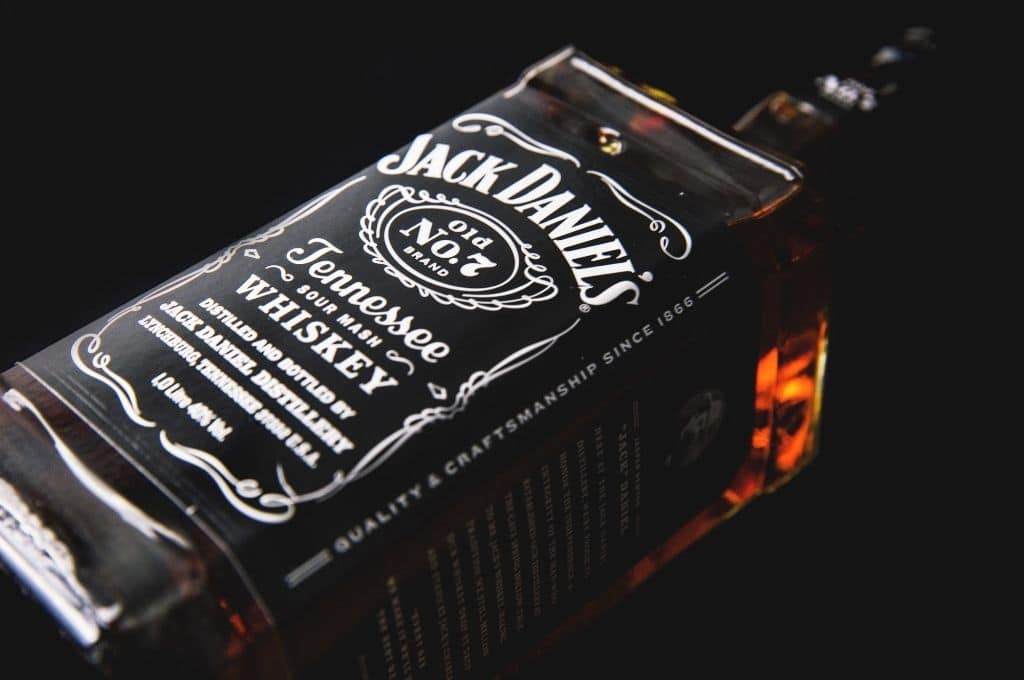
Still unsure?
If you have gone through all of the rules, and you are still unsure about whether or not your food item is prohibited through airport security, you can simply contact TSA.
For items not listed here, snap a picture or send a question to AskTSA on Facebook Messenger or Twitter. They state that they are available from 8 a.m. to 10 p.m. ET weekdays; 9 a.m. to 7 p.m. weekends/holidays.
TSA Food Rules FAQ
Liquid chocolate
Creamy dips and spreads
Mashed fruits such as applesauce
Gravy
Honey
Jam and jelly
Maple syrup
Oils and vinegars
Peanut butter
Wet pet food
Salad dressing
Salsa and sauces
Soups
Yogurt
Baby food is allowed through airport security when brought in “reasonable quantities.”
Baby formula is allowed through airport security when brought in reasonable quantities.
Yes, fruits and vegetables are allowed. Just be mindful that some destinations may have regulations on fruits and vegetables.
Yes, you can bring seafood through security and onto a plane.
Yes, as long as your ice cream is in a solid state.
Yes, but powder-like substances greater than 12 oz. / 350 mL must be placed in a separate bin for X-ray screening.
Many airlines do not count food as a carry-on. This means you could bring a carry-on bag, personal item (such as a backpack), and a container of food on the plane.
Final word
It is somewhat surprising that TSA allows you to bring it in so much food through airport security. But for those people who are on a budget or like to trim expenses, bringing food through airport security can be a great way to save money. Just make sure that you are aware of the restrictions on certain foods and you should have a smooth experience.
Daniel Gillaspia is the Founder of UponArriving.com and the credit card app, WalletFlo. He is a former attorney turned travel expert covering destinations along with TSA, airline, and hotel policies. Since 2014, his content has been featured in publications such as National Geographic, Smithsonian Magazine, and CNBC. Read my bio.

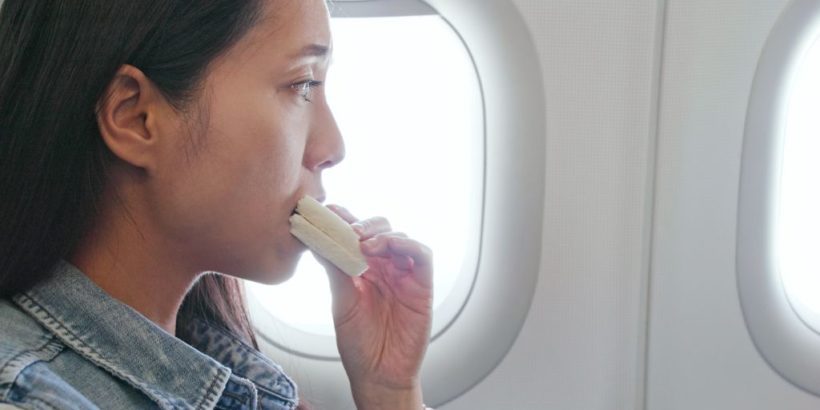
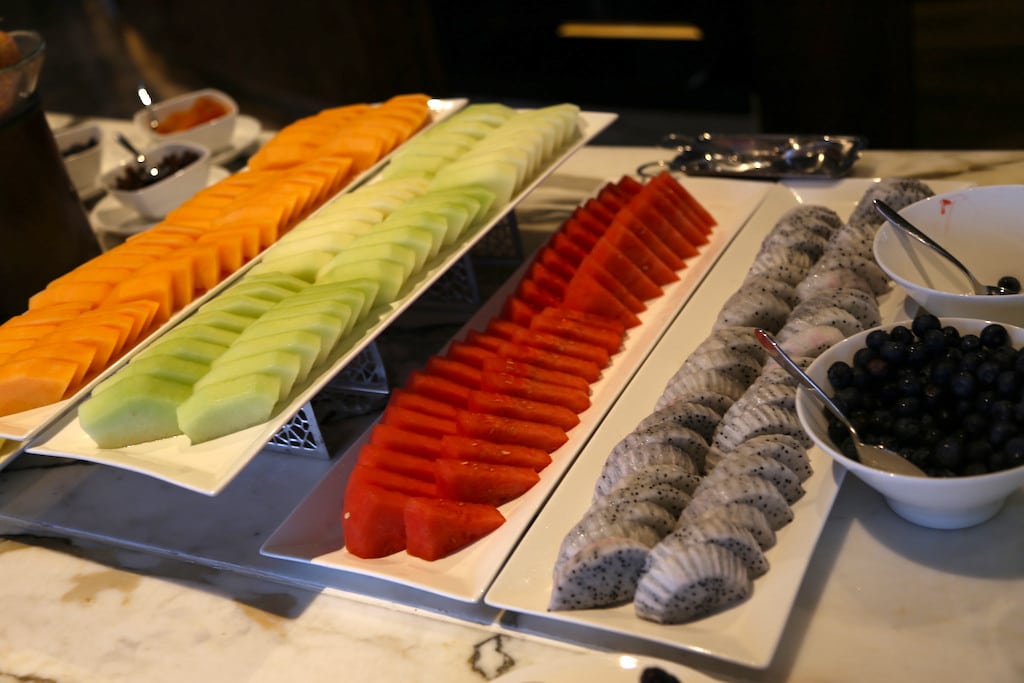
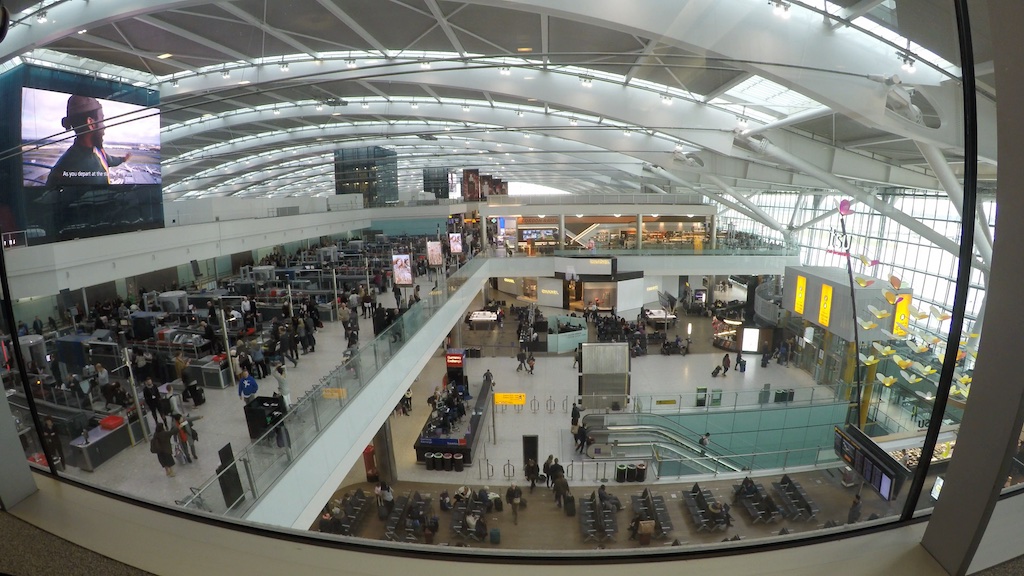
Yeah I totally get that. My guess is that this is a super low priority regulation that’s rarely enforced.
Can I bring hard cheese and sliced salami in a quart size baggie on the plane ??
Yes, that shouldn’t be an issue.
For transporting live lobsters and steamers (clams) by carry-on, guidelines state the use of a “clear, plastic, spill proof container” one in which the TSA officer will inspect at the checkpoint. What does this mean exactly? Is it okay to use frozen gel packs inside an insulated plastic cooler or box as long as the lobsters and clams are tightly sealed in a clear plastic bag? In this case the insulated plastic cooler or box would be within the recommended size of carry-on per airline (max. 22″L x 14″W x 9″H). In this case, is a “clear, plastic, spill proof container” considered a plastic bag?
I’m on a special diet and need to bring Breakfast bars and cereal in my carry on. Along with packaged mashed potatoes and powdered shakes. Can I bring this on my carry on?
The packages mashed potatoes could be an issue depending on the state they are in but the powder for shakes (assuming it’s dry) should be allowed. Just be prepared for a closer inspection at the security station.
Can a pasta and sauce dish be brought on a plane?
Can I bring vacuum packed fish and bacon on ryanair flight from Manchester to lanzarote in my checked in case
Can I bring aboard a to-go cup of wine?
Hey Judith, it would have to be in a 3.4 ounce container and be aware of the restrictions of consuming your own alcohol on a flight.
Not food but can I bring a plant cutting? I want to propagate a plant my mother had.
Yes, you’ll be fine (assuming you are flying within the continental US). Other locations may have restrictions.
What if I bought food outside and I’m eating it before but didn’t finish by the time I got to security I’ll have to dispose it?
Hi Jeff, as long as the food does not contain liquids, you should be able to bring it through security even if it’s unfinished.
I am from India moving to Ireland for 1 month .Can we take with ourselves pulses , rice ,multigrain Aata with us in the luggage sectionb. If we can take then how much quantity
I’m flying to a strawberry farm in Georgia, will I be allowed to bring a flat of strawberries back on the plane?
As long as it fits in the plane like a carry-on item should, you should not have a problem.
I am flying to Rome, can I pack a protein drink n my carryon? And put some in my checked luggage?
I have gluten and dairy allergies. I want to bring foods on board a plane WITHOUT these ingredients. I know I can bring them onboard BUT I want a SEPARATE bag/lunch bag for it, and NOT put it in my carryon. I know I used to be able to. What are the current rules? Thanks.
Is food or drink available for purchase on the plane?